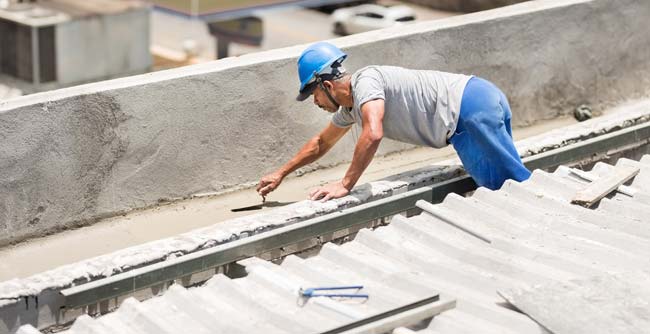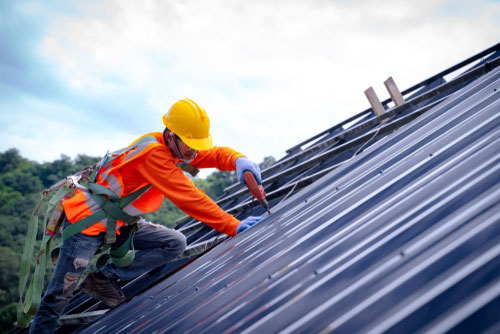Find the best Perrysburg Roofer for expert roof installation services.
Find the best Perrysburg Roofer for expert roof installation services.
Blog Article
How to Assess Various Roof Options for Your Structure Needs
Examining roof choices for your structure needs an extensive method that thinks about numerous factors such as the intended usage of the framework, regional environment problems, and product features - Perrysburg Roofer. It is necessary to evaluate the benefits and downsides of different roof types, from asphalt shingles to metal and clay floor tiles, while likewise factoring in initial costs and long-lasting maintenance.
Assessing Your Building's Requirements
To properly assess roof options, start by extensively analyzing your structure's requirements. Start by taking into consideration the building's meant use, as different structures may demand differing roof requirements. Residential roofing systems commonly prioritize aesthetics and insulation, while commercial structures might focus on longevity and load-bearing capability.
Following, assess the regional environment conditions that will certainly influence roof efficiency. Elements such as temperature changes, precipitation degrees, and wind patterns can affect product choice and layout. A roof covering system that masters a temperate environment may not execute too in locations vulnerable to hefty snowfall or extreme warm.
Additionally, evaluate the structural honesty of your building. Guarantee that the existing structure can sustain the selected roofing products, especially if considering much heavier options. It is additionally critical to assess any local building ordinance or policies that may dictate details requirements for roof.

Comparing Roofing Products
Once an extensive evaluation of your building's needs has actually been completed, the next step involves comparing various roofing products. Each product offers distinct benefits and negative aspects, making it necessary to align your selection with your particular needs and situations.
Asphalt roof shingles are extensively identified for their cost and ease of setup, making them a popular option for residential buildings. On the other hand, steel roof covering, recognized for its longevity and durability, can withstand severe weather problems yet might include a higher initial investment.
Clay and concrete ceramic tiles supply excellent thermal insulation and aesthetic allure, specifically for Mediterranean-style style, yet they need an even more robust structural support because of their weight. Wood drinks offer an all-natural look and good insulation residential or commercial properties but may require more upkeep and are vulnerable to fire threats.
Examining Price and Spending Plan
Analyzing your roof choices demands a careful examination of expense and spending plan factors to consider. The total budget for a roofing task consists of a number of elements, including material costs, labor expenditures, upkeep, and prospective long-term financial savings. It is important to establish a clear spending plan before checking out particular roof materials, as this will certainly assist the decision-making process and aid you stay clear of overspending.
Begin by getting quotes from multiple professionals to understand labor expenses in your area. Guarantee that these estimates include all required solutions, such as removal of the old roofing, installment, and any type of additional attributes, like insulation or air flow enhancements - Roofing Contractor. Next off, examine the price of different roof materials, considering both first installment costs and expected life-span

Recognizing Energy Efficiency
Energy effectiveness plays a critical duty in the choice of roof products and systems, substantially impacting both energy intake and total convenience within a building. A well-chosen roof can improve thermal efficiency, minimizing the requirement for home heating and cooling down systems, which subsequently reduces power costs and decreases environmental impact.
When examining roof options, consider products that show rather than take in warm. Light-colored or reflective roofing products can considerably lower roofing surface temperature levels, bring about lower energy use during hot months. In addition, correct insulation and air flow are necessary to optimize the energy performance of the whole roof system. Insulation avoids warmth transfer, while ventilation alleviates heat accumulation in the attic space.
Another essential element is the roof covering system's longevity and upkeep needs. Sturdy products that call for less regular substitute contribute to long-term energy savings. The energy performance of a roof system can likewise be assessed with its compliance with established sustainability scores such as ENERGY CELEBRITY or LEED.
Thinking About Visual Appeal
A roof covering's visual charm dramatically influences the overall look of a structure, enhancing its architectural design and enhancing curb allure. Roofer. When reviewing roofing options, it is vital to think about how the selected material, color, and design will certainly balance with the existing structure and neighborhood. A well-designed roof can elevate also the easiest of structures, transforming them right into visual prime focus
Different roof covering products provide different aesthetic top qualities. For instance, traditional roof shingles might stimulate a timeless charm, while metal roof can impart a modern, sleek appearance. Additionally, the color of the roof product plays a crucial function; lighter shades can make a building show up more roomy, while darker tones may produce a cozier atmosphere.
In addition, building components, such as dormers and eaves, can improve the roofing's visual effect. It is a good idea to talk to specialist developers or architects to ensure the picked roofing option aligns with the overall layout intent. Ultimately, a roofing system must not just provide functional advantages yet likewise contribute favorably to the structure's visual, mirroring the owner's taste and the personality of the surrounding atmosphere.
Conclusion

Report this page